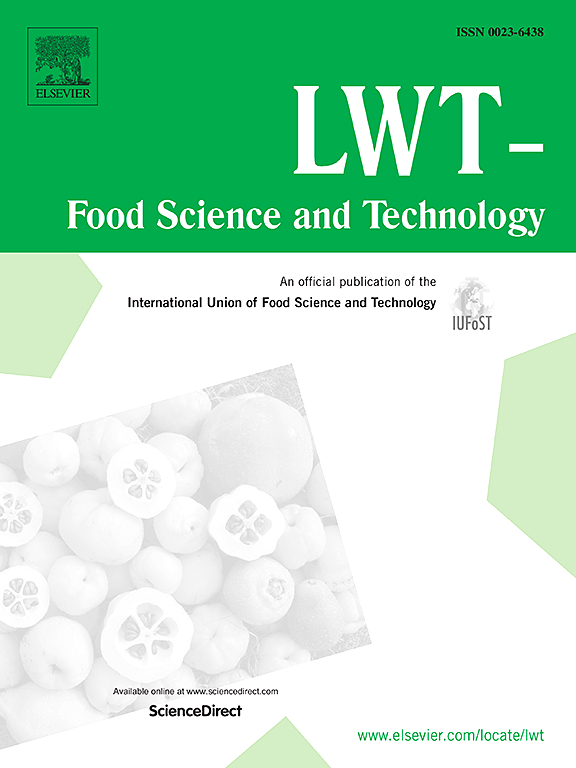Culture-independent analysis of the common microbiota of strawberry fruits
IF 6
1区 农林科学
Q1 FOOD SCIENCE & TECHNOLOGY
引用次数: 0
Abstract
The common microbiota of strawberry fruits was characterized by sequencing with a special focus on spoilage organisms. A comprehensive understanding of the microbiota of strawberries might reduce food loss by spoilage and facilitate the manufacture of safe products. Altogether, 19 samples of fresh strawberries from Spain, Germany, and Austria were collected and analyzed by Illumina amplicon sequencing. A shared microbiota of the investigated strawberries is represented by 16 bacterial and 14 fungal genera. Potential spoilage organisms including the genera Bacillus, Cladosporium, and Botrytis (in 95% of samples) were identified as part of this common microbiota of the analyzed strawberries. These spoilage organisms might pose a particular risk to pasteurized strawberry products by their ability to form spores. In this context, Cladosporium herbarum and Botrytis caroliniana could be of particular importance. Human pathogens already known to be associated with foodborne illness caused by strawberries were not identified in the microbiota of investigated strawberries. The present study underlines the importance of understanding the microbiota of strawberry fruits to produce safe and shelf-stable food from raw strawberries.
求助全文
约1分钟内获得全文
求助全文
来源期刊

LWT - Food Science and Technology
工程技术-食品科技
CiteScore
11.80
自引率
6.70%
发文量
1724
审稿时长
65 days
期刊介绍:
LWT - Food Science and Technology is an international journal that publishes innovative papers in the fields of food chemistry, biochemistry, microbiology, technology and nutrition. The work described should be innovative either in the approach or in the methods used. The significance of the results either for the science community or for the food industry must also be specified. Contributions written in English are welcomed in the form of review articles, short reviews, research papers, and research notes. Papers featuring animal trials and cell cultures are outside the scope of the journal and will not be considered for publication.
 求助内容:
求助内容: 应助结果提醒方式:
应助结果提醒方式:


